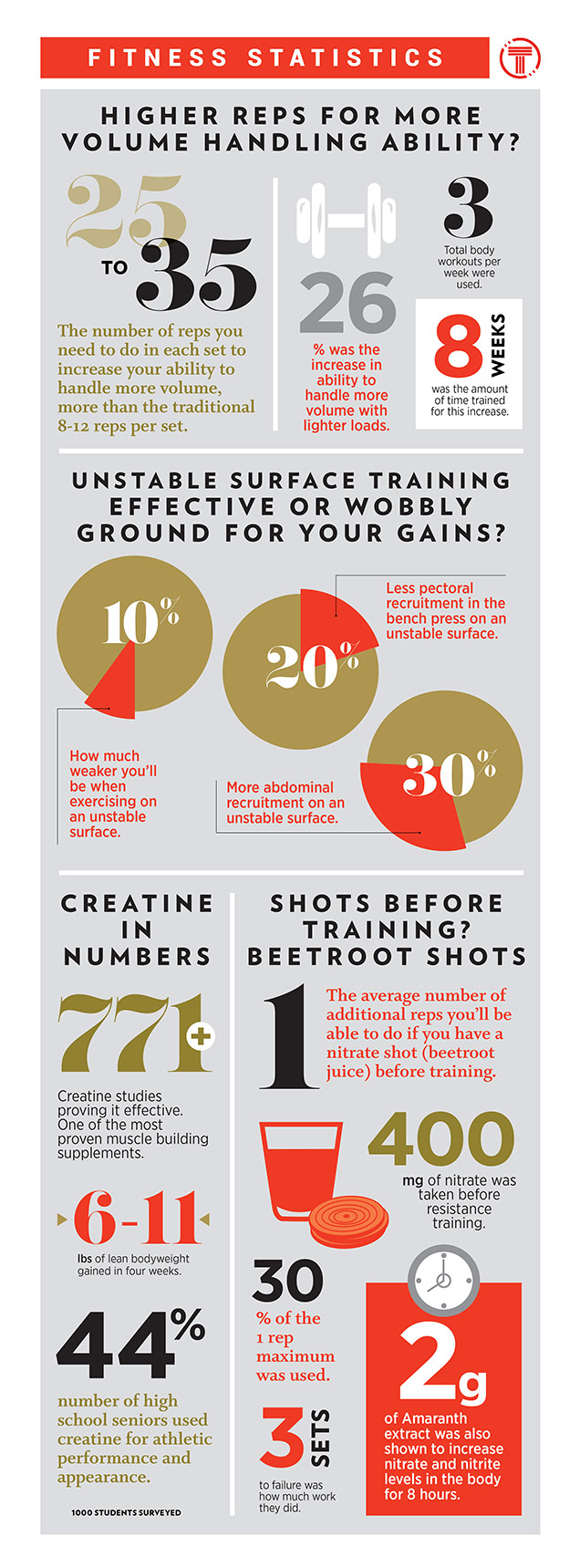We get it, your time is absolutely valuable. It’s a commodity that you’ll never get back and sometimes you just don’t have the extra hours to bury your head in a journal to find the answer you’re looking for. We’ve got you hooked-up. Here are the short versions of some of the latest muscle building studies to come out of the lab (and the gym) this year:

Train in higher reps for better ability to handle volume?
25-35
The number of reps you need to do in each set to increase your ability to handle more volume, more than the traditional 8-12 reps per set.
26% – was the increase in ability to handle more volume with lighter loads
8 weeks – was the amount of time trained for this increase
3 – Total body workouts per week were used.
Source: Asian Journal of Sports Medicine
Unstable surface training : Effective for muscle growth or wobbly ground for your gains?
10%
How much weaker you’ll be when exercising on an unstable surface
6 rep max – The test the study was based on.
20% – Less pectoral recruitment in the bench press on an unstable surface.
30 % – More abdominal recruitment on an unstable surface.
Source: Journal of Strength and Conditioning Research
Creatine in numbers
771+
creatine studies proving it effective. One of the most proven muscle building supplements.
6-11lbs – of lean bodyweight gained in four weeks
(Remember that’s not the same as lean muscle tissue. Lean bodyweight a gain in anything that’s not fat. Water, muscle, ligament, bones etc)
44% – number of high school seniors used creatine for athletic performance and appearance
1000 students surveyed
Source: Examine.com and University of Queensland
Shots before training – Are beetroot shots for increased nitrate levels effective for muscle?
1
The average number of additional reps you’ll be able to do if you have a nitrate shot (beetroot juice) before training.
400mg of nitrate was taken before resistance training.
2g of Amaranth extract was also shown to increase nitrate and nitrite levels in the body for 8 hours
60% of the 1 rep maximum was used.
3 sets to failure was how much work they did.
Source: Journal of Strength and Conditioning Research + Nutrition







